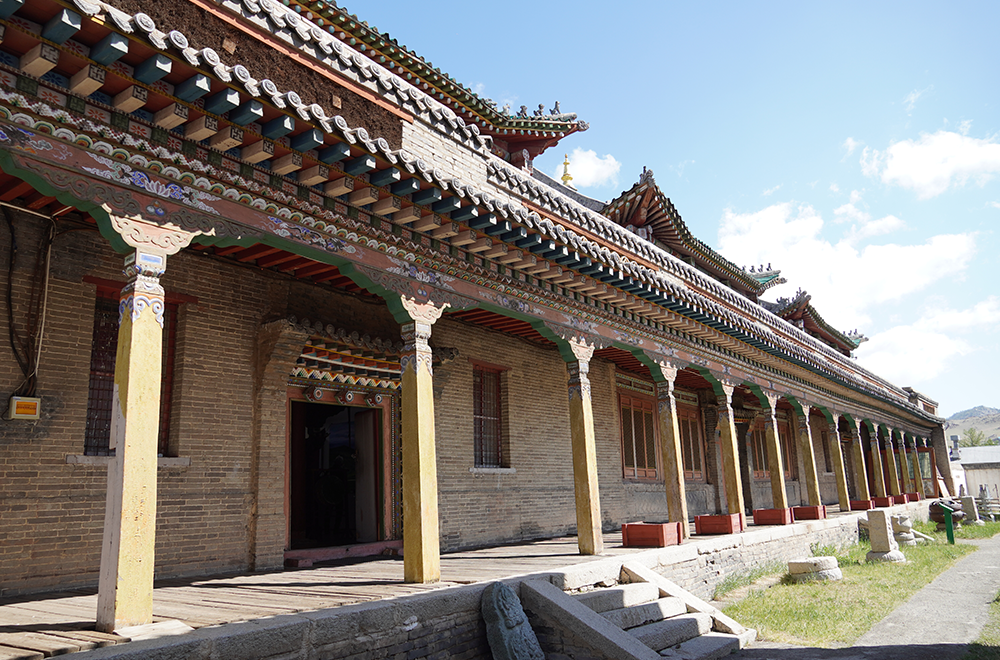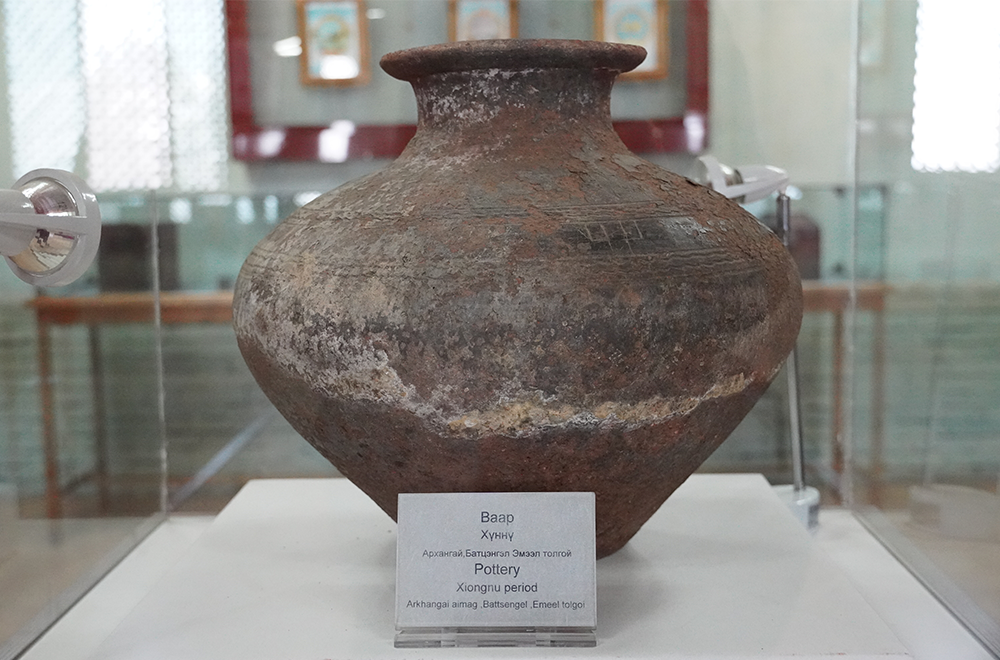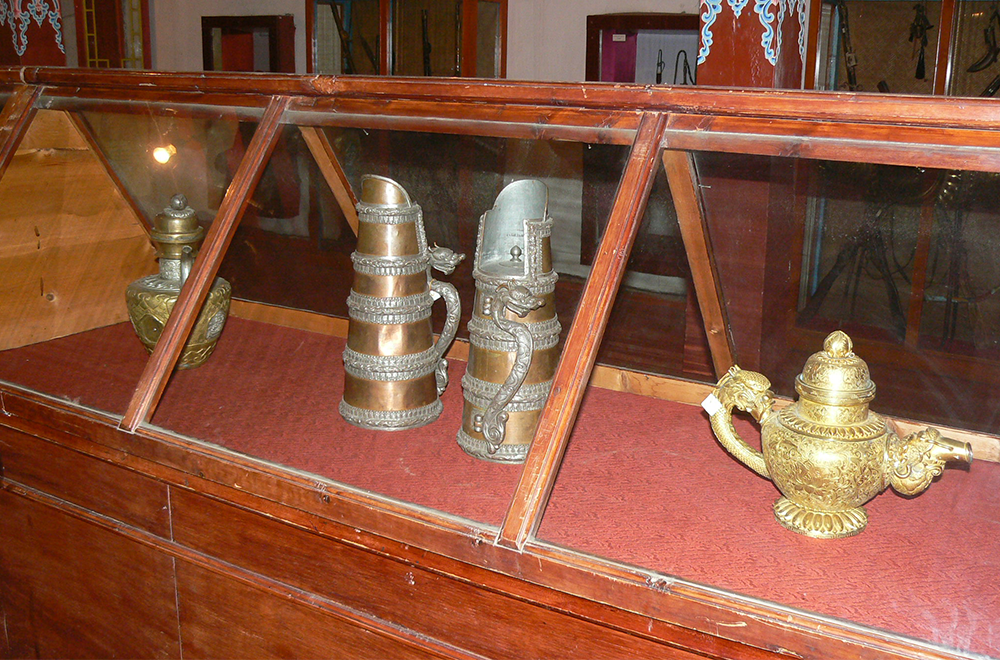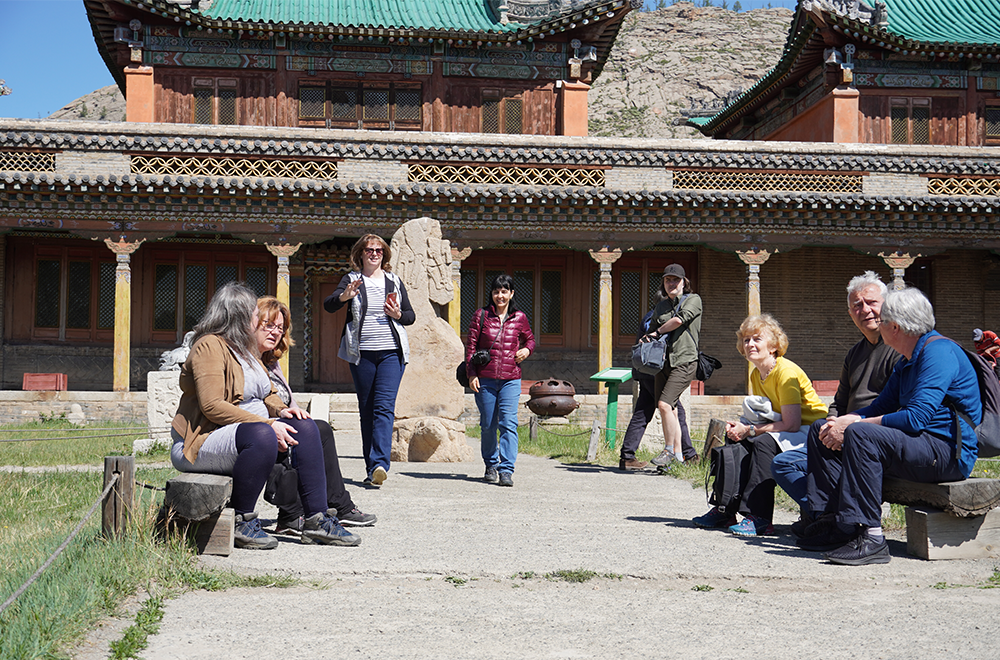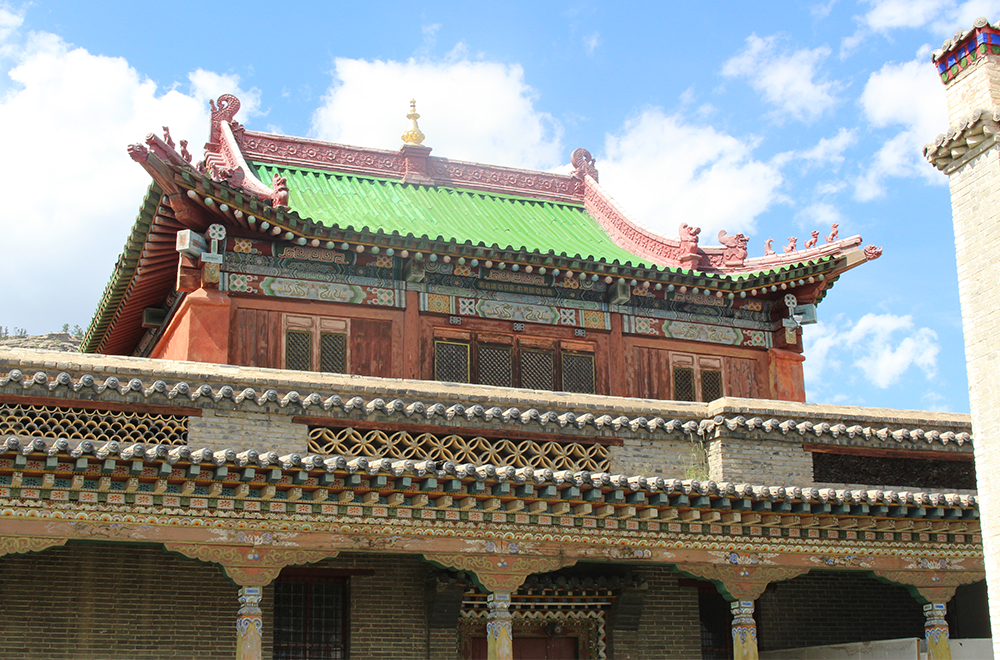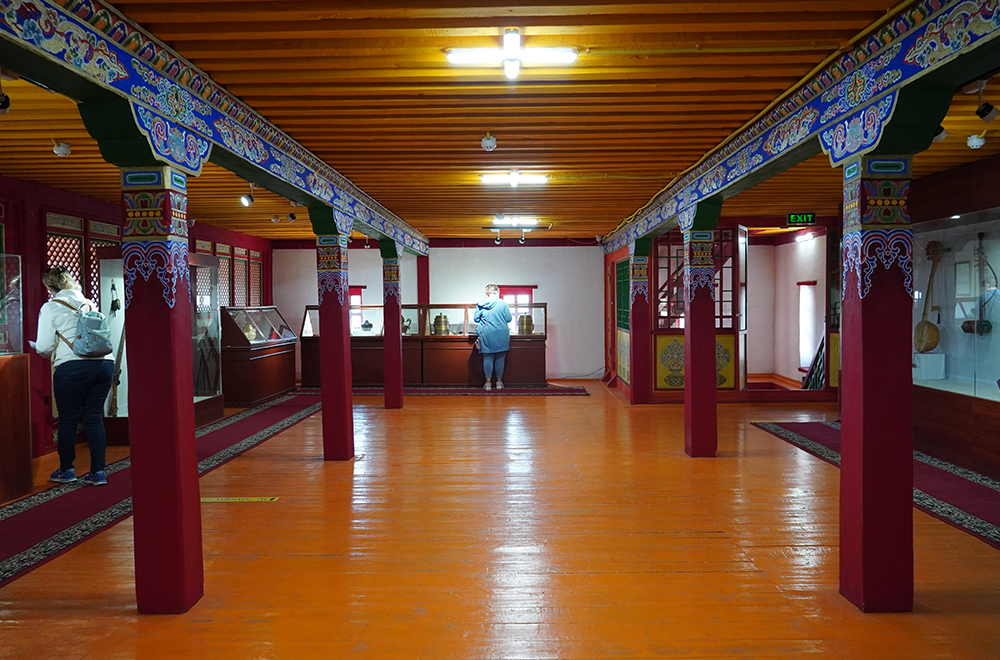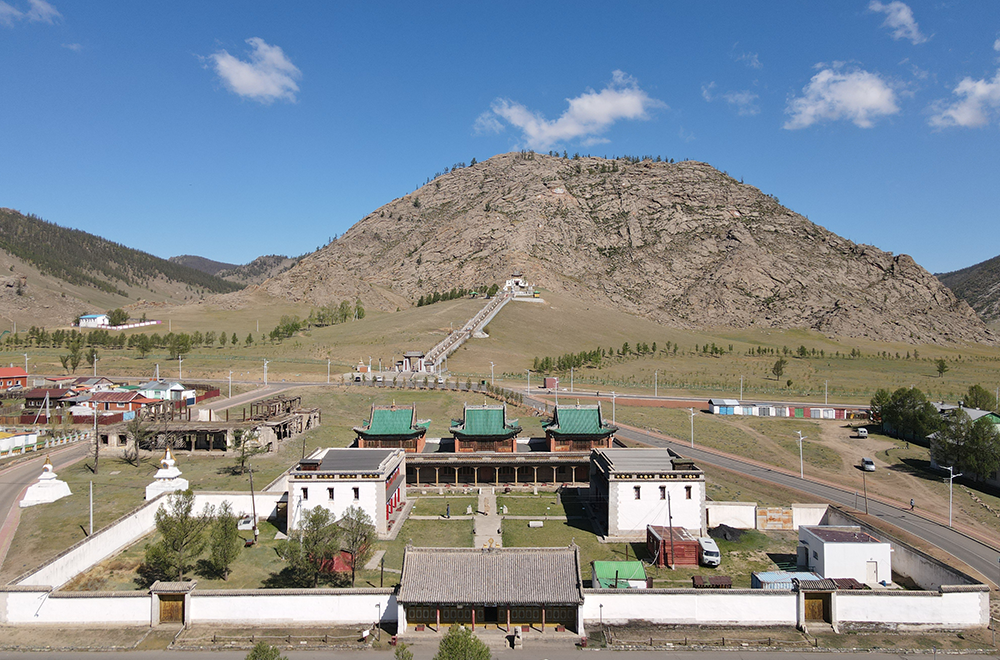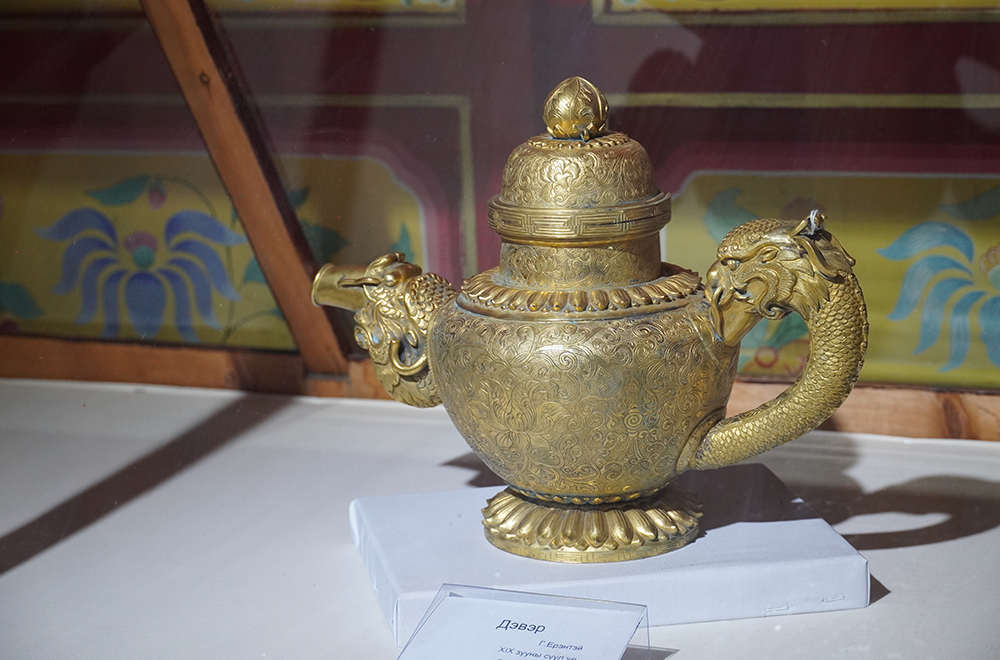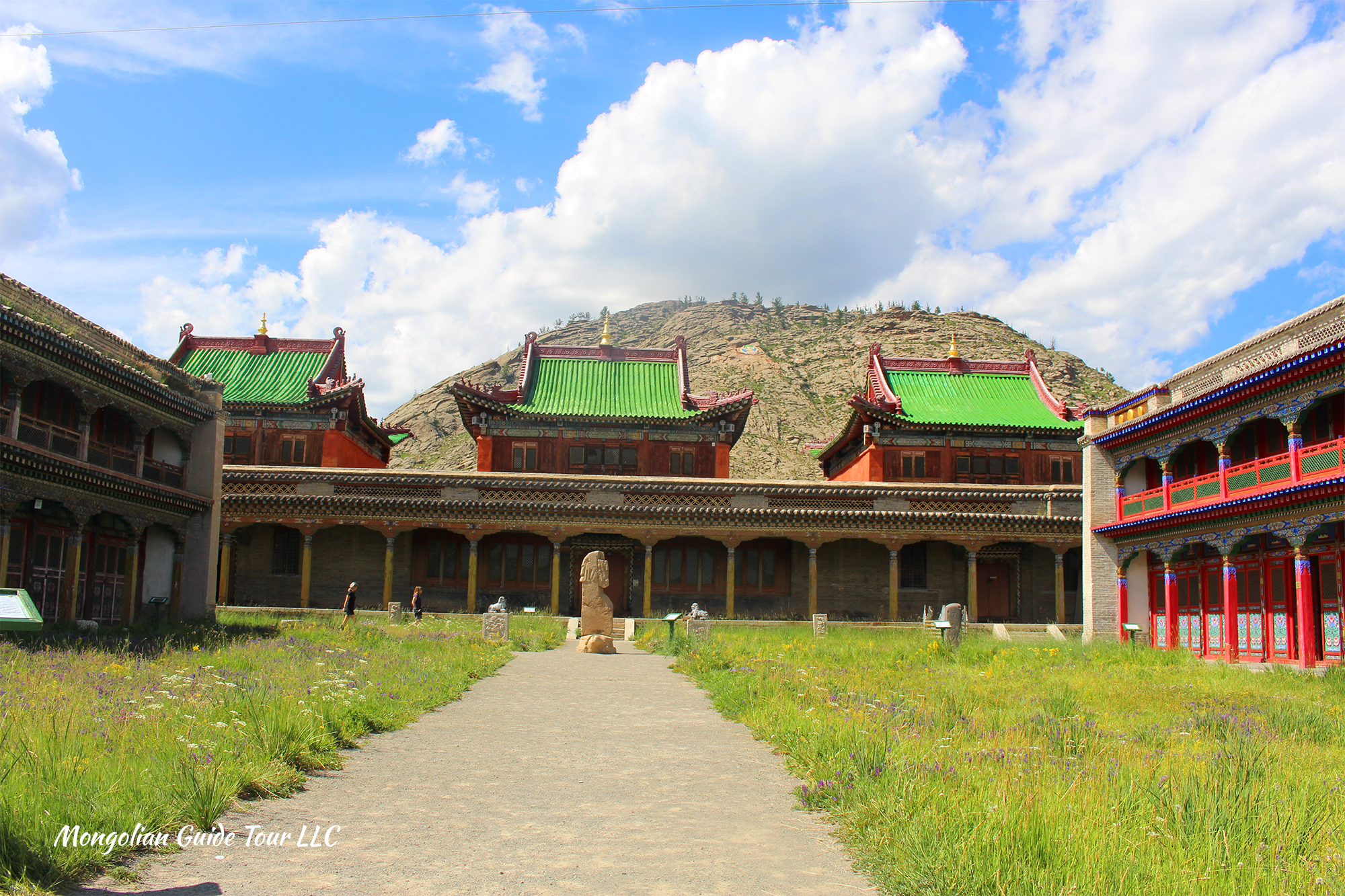
MUSEUM OF ARKHANGAI PROVINCE
Located in the northern outskirts of Tsetserleg city and the southern slopes of Bulgan Mountain, “Museum of Arkhangai Province” is the building originated from a Buddhist monastery. It was founded in 1631 as the “Zayiin Gegeen Monastery” and later became a museum. The museum was first established in 1947 under the name "Local Research Cabinet" with more than 500 exhibits and later shifted to the remaining structures of the Zayiin Gegeen Monastery in 1967. The exhibit collection of the museum consists of three categories: historical, ethnic, and religious which became a Local Studies Museum of Arkhangai Province in 1996. The museum aims to preserve, promote and protect the history, culture, and heritage of local nomads and aims to educate visitors and provide them with historical knowledge. Visitors are introduced to the main features of the museum such as the cultural and intellectual spirit of the Khalkh ethnic group, the heritage of Khalkha Zay Pandida Khutagt Luvsanperenlei, and the historical and cultural heritage of the Arkhangai region. Five halls of the museum for permanent exhibition and other two hall for temporary exhibition which display more than 3,800 exhibits.
At the central square of the museum, the "Bugat Inscription", which belongs to the "unique precious exhibits" is disposed of. The inscription was first discovered in 1956 by archaeologist Ts.Dorjsuren in the area of Bugat Bag of Ikhtamir Sum, Arkhangai Province. It is a stele with an inscription erected on a turtle-shaped stone pedestal. The stele is made of fine orange granite. On top of the upper part has a craved image of a wolf nursing a child that becomes a prominent research subject topic by scientists. A stele inscription measures 198x73x20cm, and the turtle pedestal is 122x93x47cm. Researchers believe that the monument's inscription was written in AD 582 and is related to the history of the Turkic Empire. Historical events and kings’ names of the early Turkic Empire such as Nivar, Buman, Mukhan, Taspar, etc. have been recorded in the inscriptions.
Among the museum exhibits, there are a lot of relics from the Stone and Bronze Ages including stone tools, awls, bronze bridles, bronze ladles, and bronze knives. Moreover, vases and pots belonging to the Hunnu, and women's clothes belonging to the Uyghur period were exhibited. Also, the artifacts belong to the Middle Ages such as ladles, fiddle, state harp, and steel carvings made by famous artisans Erentei and Chavgants of Dalai Choinkhor Van province, flint-flake, dever, pitcher (dombo), censer (sangiin boypor), sandalwood stamp, silver bow, meat knife, and shoes were used by Khalkh Zaya Pandita. Additionally, there can be found also rare and precious exhibits that attract the attention of scientists and visitors like the artifacts used by the Luu Guny Vandan Avarga (Wrestling champion title called “Avarga”) and Buur Jamiyan Avarga.
Here are some special relics among the museum collections,
- Dever (Holy water kettle): This is made of copper and gilded on the outside, covered with a lotus flower pattern, and has a handle and spout with a dragon's head. In 1963, Ayushjav, a resident of Tariat sum, provided the museum's collection.
- Twin pitchers (Tea pitchers-dombo): Made from copper and used a method of heat-soldering and welding.Pitchers encircled by vintage of 5 rings with dragon pattern and fully carved dragon-shaped handle.A local citizen Gendenbaljir used this, and later he donated to the museum in 1957.
- Khet Khutga (Traditional Mongolian knife set): The "khet khutga" consists of decorations made by an elephant’s tusk, stainless steel belt, and an arrowwood scabbard. It is preserved with 2 “bel” (a chain), 1 "teeg" /hook/, 1 “khet” (a forged set for kindling a fire, and 2 chopsticks. This knife set was used by Vandan Avarga (Naadam festival's wrestling champion) from Luu Gun (Luu Province) and was received in the museum's collection in 1997.
According to the legend, a long time ago, Undur Gegeen Zanabazar (The First Jabzandamba Khutugt), Zayiin Gegeen Luvsanperenlei, and Shireet Manjushri Gegeen were searching for a place to build a monastery. They reached the foot of Bulgan Mountain and decided to spend a night. Undur Gegeen Zanabazar asked “Our search for the place where we wish to spread virtue and build a monastery coincided here. So, we spend a night here and leave our bowl overturned. Whoever could first grow a flower under his bowl would have the honor of building the monastery” and the other two agreed. At dawn, Zayiin Gegeen woke up and excitedly went to look under whose cup the flowers would grow, and the Undur Gegeen, who was lying in a sleeping state, knew about it. It is said that when the three of them raised their cups in the morning, there were flowers under Zayiin Gegeen’s bowl. Undur Gegeen said, "Zay Pandida, holy young man, you were both lucky and sharp. This place is now your land. May you have countless disciples and spread your virtue”. Before he leaves the place he whispered in the ear of Zayiin Gegeen “Be aware that if your disciples may be thievish”.
Therefore, "Zayiin Khuree" monastery was established in the foothills of Bulgan Mountain. It was a large religious and cultural center where about 3000 monks and more than 2000 civilians used to live. Also, it was the main hub of Sain Noyon Khan Province among its 60 monasteries. In other words, it was not only a large settlement of Mongolian society in the early XYII-XX centuries, but also a center for Eastern Buddhist culture and education.
The Zayiin Khuree used to be two separate monastery with 5km from each other and consisted of 26 temples. These temples were built by wellknown artists such as Borchogba, Dandarjamiyan, and Jigdel until the end of the 16th century. Later, in 1887, repairs had been made by famous blacksmiths named Tugs, Sonom, Luvsansharav, and Buyant.
The Zayiin Khuree became one of the large Khalkha monasteries, headed by a prestigious lineage of reincarnated lamas. Zaya Pandita’s lineage was viewed as the third most important lineage of the Khalkhas after the Jebtsundamba Khutugtu and the Lamyn Gegeen. In the monastery, Zaya Pandita’s lineage including Second Zaya Pandita Luvsanprinlei (1642-1715) who initiated and founded the monastery himself, III Zaya Pandita Luvsanjigmeddorj, IV Zaya Pandita Luvsannyandag, V Zaya Pandita Luvsanjigmednamjil, and VI Zaya Pandita Luvsantuvdenchijiinyam used to live. Monasteries had great autonomy and it operated according to a strict order as a Buddhist institution. The main administration, called the “Shanzov ministry” of the Khuree monasteries, issued religious and political matters. The “Shanzov ministry” used to adjudicate cases, resolve tax issues, and conduct all its official affairs in the national Mongolian script. About 5,000 people from more than 1,000 families were as residents of Zayiin Khuree province, and they were divided into 8 “aimag” or “otog” /groups of people living in nearby territory/, and a person with the title of Taij or Zaisan worked as the chief of the “otog” and was subordinated to the Ministry of Shanzov.
Guden Temple: The Guden Temple, where II Zaya Pandita Luvsanperenlei used to live, was built in 1696. The temples which were “house” to Bogda Khutugts were called “lavrin” and the Guden temple had west and east “lavrins”. The “lavrin” temples were also named different as “Khutugt’s palace.” Until the temples were destroyed /in the late 1930s the young Mongolian People’s Republic undertook the destruction of the Buddhist institutions and purges of their clergy. The Buddhist heritage suffered great damage/, West Guden temple kept the II, III, IV Zaya Panditas’ mummies, while the V Zay Gegeen’s mummy maintained in East Temple. It is said that during the persecution period, the embalmed mummies of the Khutugts were taken out from the monasteries and buried in the ground. After restoration of the right to worship, embalmed mummy of the first Zay Gegeen Luvsanperenlei, who built the monastery, was restored and placed back in its original place.Until 1940, the top of East Guden temple had a tent-shaped roof and a wooden lattice fence around the outside. There was also a "Gegeen’s library" on the upper floor of the temple, which was an immense library containing ancient history, novels, literature, and religious books classified in Tibetan, Mongolian, and Chinese languages. After the destruction of temples all over Mongolia,The Guden temple was left without a roof and turned into the building of the fire command of Arkhangai province. In 1942, when it came under the control of the food processing plant, the temple building was used as a warehouse for alcohol and other supplies until the end of the 1950s.
Semchin Temple: In 1802, III Zaya Pandita Gegeen built Eastern and Western Semchin temples with the Tibetan style of architecture as a two-story temple. It has three floors with a flat sloping Asar (tent) roof at the top. The lower two floors were made of brick, while the upper floor was made of wood, with a small room covered by an “Asar” (tent) roof. Later in 1907, the disciples of Zaya Pandita II from Inner Mongolia came to Mongolia and settled in these two Semchin temples. They converted the 3rd floor’s room into a mantra-chanting hall. Also, another Semchin temple was converted into Tsogchin Khas temple. In 1909-1910, the temples were renovated and brought to its current state.The Eastern Semchin has 16 columns in its front, with two gates between each column. In this temple, V Zay Pandita used to chant the "Duinkhor" mantra in the 1920s. But later, when he moved to the other temple, Semchin temple's mantra chanting was stood and began to be used as a storage room to coach carts, shoulder-yoke, and other objects used by Zay Pandita Khutugt during festivals. The Western Samchin was similar in appearance to the Eastern Samchin, but the internal organization was different. The upper floor has three large and small compartments, and the middle compartment was furnished with a twin bed with brown mahogany, four mahogany cabinets, three mahogany tables, fifty mahogany chairs with stone legs, and the Dalai Lama's bed. The lower floor of the Samchin has three compartments, and in the middle compartment, there was a mahogany chair where the Zaya Pandita used to sit. The furniture items of the Western Samchin sold by the socialist government for the purpose for collecting taxes.
The portraits of Gods behind the monastery, painted on the slopes of Bulgan Mountain, become brighter whenever they are washed by rain. Locals said that during the repression period, the portraits were tried to be removed but failed. Researchers have not yet been able to define the composition of the blue brick of the monastery and the painting of the deity. Finally, in 1994, the remaining buildings of Zayiin Khuree Monastery taken under state protection.


